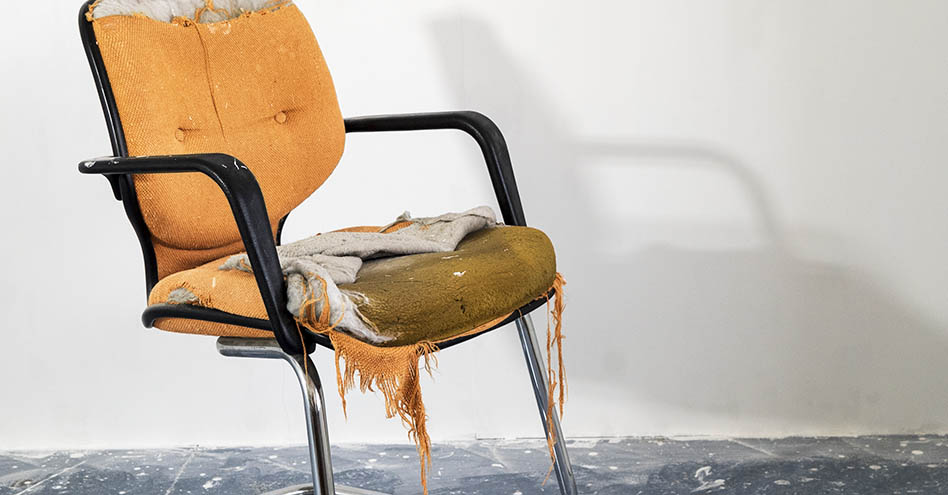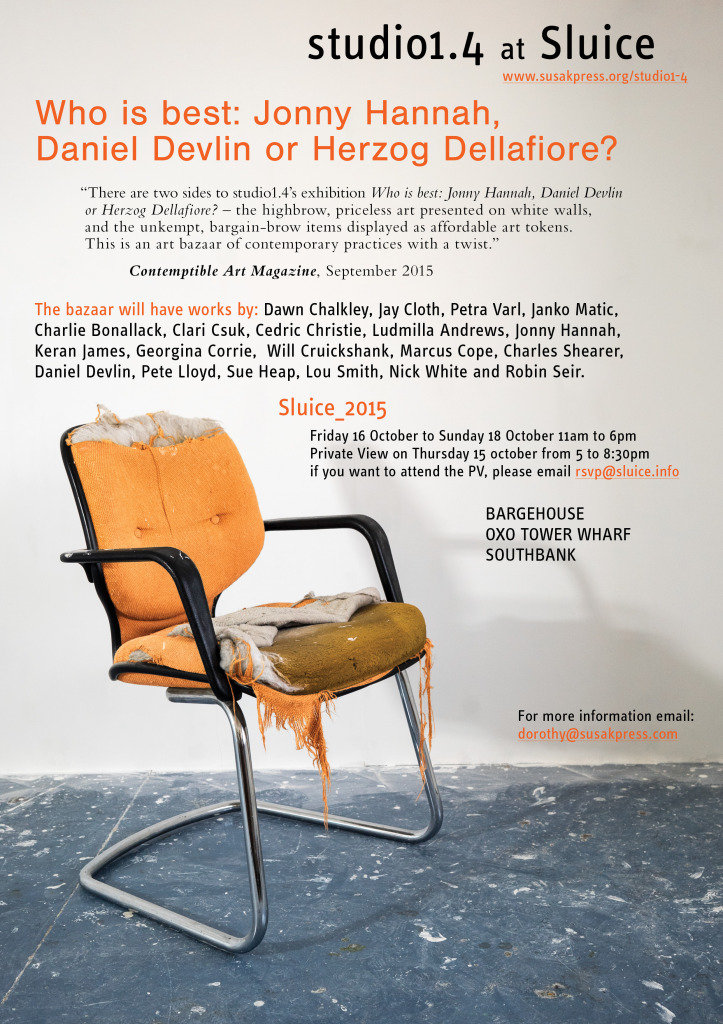Who is best: Jonny Hannah, Daniel Devlin or Herzog Dellafiore?


Who is best: Jonny Hannah, Daniel Devlin or Herzog Dellafiore? explores the idea of value in art. There are two converse sides to this show: the contemporary and familiar face of priceless art presented on white, impressionable walls, and then, incongruously adjacent, the typical art bazaar of art droppings, which is an abruptly encroaching scene of unkempt items displayed as affordable tokens of art. This is highbrow versus bargain-brow. Exploration of these contrasting faces of artistic representation reveals one powerful difference between the two (apart from price): their artistic ‘validation’ varies only in the amount of intellectual and conceptual jargon surrounding each.
When artistic talents collide they give birth to something utterly mesmerising which holds no permanent place in any artistic era. Adjacent artworks create an uncomfortable conflict that is both beautiful and torturous to gaze upon – yet our egos do not allow us to look away. The divergent space between the canvases has untouched value; it is a movement in itself; a quasi-divine asymmetrical intersection forged by one artist’s style crashing into another’s; a relationship seldom explored by curators but, rather, avoided.
Let us substantiate the space in between: look upon this as your art bazaar of contemporary practices with a twist, one that drives one not only to compare, contrast and create new meaning, but further to appraise uninhibited, and ultimately to cast aside the artworks for what they represent as standalone statements, valuing them instead as the sum of their parts. By piecing together the meanings promoted by the artists’ differing world views, we see the emergence of a viewer’s patchwork quilt, sewn collectively in, and by, the minds of the spectators.
Consider this exhibition as one staged primarily to fulfil the function of an installation: what is being set up and observed is a scene within each viewer’s consciousness, incorporating the unequivocal reactions elicited and the viewer’s assessment as to who is the most prominent artist of the three – which begs the question, whose very buttocks sit flush on the indents of the throne? In the exhibiting of artists via an accessible route that not only prompts public involvement, but strongly promotes it, there is evidently a concomitant absence of either profound or, indeed, superficial meaning. Is their circular connection to be considered post-irony or neo-formalist?
A duck. A figurative mallard that quacks a language we neither understand, nor feel we want to – and we watch as the people’s duck ruffles feathers with its perplexing yet also manifestly self-explanatory wade through the derisive world of the oblivious ostrich. Sort of like how you have just waded through this utterly nonsensical text… are you are still reading? Really? I’m impressed. The purpose of this text was to give the impression that this exhibition has some kind of meaning, to make it look as if it might have intellectual and conceptual content. It was never my intention to mislead you in any way. Lately, I have been thinking a lot about blancmange…


Leave Comment :